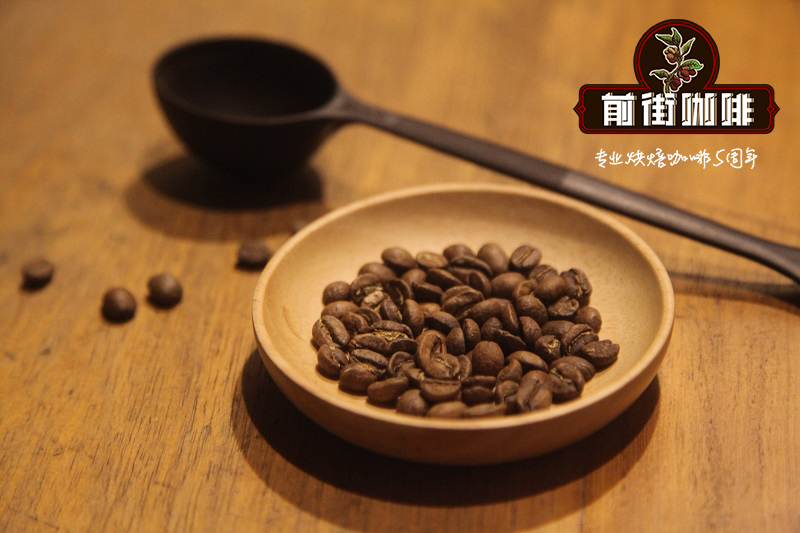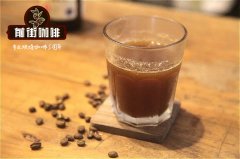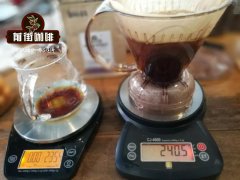Introduction to La Azotea Manor Azteia, Guatemala. How to make Azteia Coffee in Guatemala

Professional coffee knowledge exchange More coffee bean information Please pay attention to coffee workshop (Weixin Official Accounts cafe_style)
A sprawling Guatemala coffee plantation outside La Azotea Jocotenango houses three museum complexes. The museum's café covers the history and process of coffee cultivation;Casa Kojom has a superb collection of traditional Mayan instruments, masks, paintings and other artifacts; Rincon de Sacatepéquez displays colorful costumes and crafts from the Antigua Valley.
You can roam the coffee plantation itself, which is criss-crossed by nature trails; adjoining it is a botanical garden and nursery with an incredible variety of tropical plants. A shop sells quality coffee, local crafts and Maya instruments. Next to the estate is El Estado La Ronda, a stable of 30 horses, experienced riders can take part in tours of the Highlands.
Catch a tricycle from Antigua to La Azotea; it costs Q10 to Fen, extra Q5 will take a further 500m to the entrance of the museum.
The best coffee I've ever had since I wrote this. It comes from Azotea Coffee Farm in Antigua, Guatemala, one of the farms I visited on my last trip with Rainforest Alliance. Azotea is a Rainforest Alliance certified farm. I intend to write what certifies the means and all the good of it later in the week, but I have about 25 pages of handwritten notes that I can collate all the information and my thoughts through before. So, I thought I'd give you some pictures of Azotea and some information that will help you start seeing what good Rainforest Alliance certification can do.
Azotea's colorful bags for coffee are locally made. Part of Rainforest Alliance certification is a requirement that certified farms find ways to benefit and support the entire community. Paying locals to make these bags helps meet this requirement.
Another way Azotea supports the community is by placing a music museum on their farm. The local woman who worked there visited the museum and she took us to the history of Guatemala musical instruments. At the end of the museum there is a gift shop with instruments made by local artisans.
It is important to implement recycling programmes. Here, recycling bins are labeled as organic and inorganic waste. Organic waste becomes part of the composting project. Inorganic waste is properly disposed of.
Azotea has been composting for three years. Workers drink coffee slurry and horse manure and let it boil for 38-40 days. All compost on farms is used as a solid or liquid spray on plants.
Once the compost is cooked, it is moved to a dark shed for earthworm composting. After eight days, the worms help transform the compost into richer, wetter, fertile soil.
Most of the compost ends up on the plants, but some of it goes into this device. Compost mixes with water, and methane gas is produced by compost when the sun works. Right now, this is a pilot project that farms are using, but ultimately, they want to harness natural gas to power permanent worker homes.
Farm coffee plants grow 42 shades per 0.7 hecters. In this area, farms grow only shade trees, which is common, but Azotea hopes to create an environment where birds and butterflies can flourish, increasing biodiversity and tourism.
These are just some of the impressive, sustainable measures that Azotea is using to create its coffee excellence. This is a farm that did a lot of things even before it joined the Rainforest Alliance, but through certification they will continue to make improvements that benefit the environment, the community and the profitability of the company.
Brewing analysis of Guatemala coffee-Azetiya coffee beans
Hand punch reference
Use V60 filter cup, 16g powder 32g water stewed for 30 seconds, 89-90 ℃ water temperature extraction, 1:14, medium fine grinding small Fuji 4, the second water injection to 140ml water cut off, wait for the water to drop and then slowly inject water, the speed is uniform, the water level should not be too high, re-inject water to 220ml stop, extraction time 2:15 seconds_unique smoky taste and chocolate flavor, you can adjust according to your own taste.
END
Important Notice :
前街咖啡 FrontStreet Coffee has moved to new addredd:
FrontStreet Coffee Address: 315,Donghua East Road,GuangZhou
Tel:020 38364473
- Prev

How to drink Coffee beans from EL SOL Manor in Guatemala
Professional coffee knowledge exchange more coffee bean information please follow the coffee workshop (Wechat official account cafe_style) Ojo del Sol is the Spanish word for "The Eye of Sun" meaning: Guatemala Chimaltenango Ojo del Sol Natural variety: Bourbon (Bourbon), Kaddura (Caturra) producing area: Chinat Nanguo province (Chim)
- Next

Suggestion on the parameters of Vivette Nan Fruit Coffee beans how to make Coffee in Los Manor, Guatemala
Professional coffee knowledge exchange more coffee bean information please follow the coffee workshop (Wechat official account cafe_style) Guatemala Coffee Manor introduction: Guatemala Finca La Rosma Rosma Manor is located near the well-known San Pedro Necta area of Vivette South Fruit production area, the name of the manor is taken from the ancestor of the current second-generation gardener Fredy Rosales
Related
- Detailed explanation of Jadeite planting Land in Panamanian Jadeite Manor introduction to the grading system of Jadeite competitive bidding, Red bid, Green bid and Rose Summer
- Story of Coffee planting in Brenka region of Costa Rica Stonehenge Manor anaerobic heavy honey treatment of flavor mouth
- What's on the barrel of Blue Mountain Coffee beans?
- Can American coffee also pull flowers? How to use hot American style to pull out a good-looking pattern?
- Can you make a cold extract with coffee beans? What is the right proportion for cold-extracted coffee formula?
- Indonesian PWN Gold Mandrine Coffee Origin Features Flavor How to Chong? Mandolin coffee is American.
- A brief introduction to the flavor characteristics of Brazilian yellow bourbon coffee beans
- What is the effect of different water quality on the flavor of cold-extracted coffee? What kind of water is best for brewing coffee?
- Why do you think of Rose Summer whenever you mention Panamanian coffee?
- Introduction to the characteristics of authentic blue mountain coffee bean producing areas? What is the CIB Coffee Authority in Jamaica?

